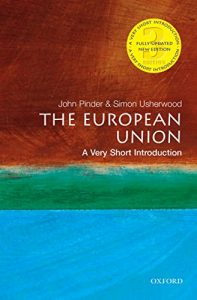Since the second edition of this popular Very Short Introduction published in 2007, the world has faced huge economic and political change. Showing how and why the EU has developed from 1950 to the present day, John Pinder and Simon Usherwood cover a range of topics, including the Union's early history, the workings of its institutions and what they do, the interplay between 'eurosceptics' and federalists, and the role of the Union beyond Europe in
international affairs and as a peace-keeper.
In this fully updated third edition, Pinder and Usherwood incorporate new material on the Lisbon treaty, the EU fiscal crisis, the state of the single Euro currency in its wake, and conclude by considering the future of the Union and the choices and challenges that may lie ahead.
ABOUT THE SERIES: The Very Short Introductions series from Oxford University Press contains hundreds of titles in almost every subject area. These pocket-sized books are the perfect way to get ahead in a new subject quickly. Our expert authors combine facts, analysis, perspective, new ideas, and enthusiasm to make interesting and challenging topics highly readable.
international affairs and as a peace-keeper.
In this fully updated third edition, Pinder and Usherwood incorporate new material on the Lisbon treaty, the EU fiscal crisis, the state of the single Euro currency in its wake, and conclude by considering the future of the Union and the choices and challenges that may lie ahead.
ABOUT THE SERIES: The Very Short Introductions series from Oxford University Press contains hundreds of titles in almost every subject area. These pocket-sized books are the perfect way to get ahead in a new subject quickly. Our expert authors combine facts, analysis, perspective, new ideas, and enthusiasm to make interesting and challenging topics highly readable.






